Nestled in the heart of Sicily’s southeastern region lies a captivating journey through time, where two extraordinary towns, Palazzolo Acreide and Noto, stand as testaments to the island’s rich cultural heritage. From the well-preserved Corinthian-Syracusan ruins of Palazzolo to Noto’s stunning Baroque architecture, this expedition promises to unveil the resilience and artistic brilliance that have defined these historic communities. Delving into their intriguing pasts, visitors will uncover the stories that have shaped the unique character of these late-Baroque gems, setting the stage for an unforgettable exploration of Sicily’s enduring spirit.
Key Points
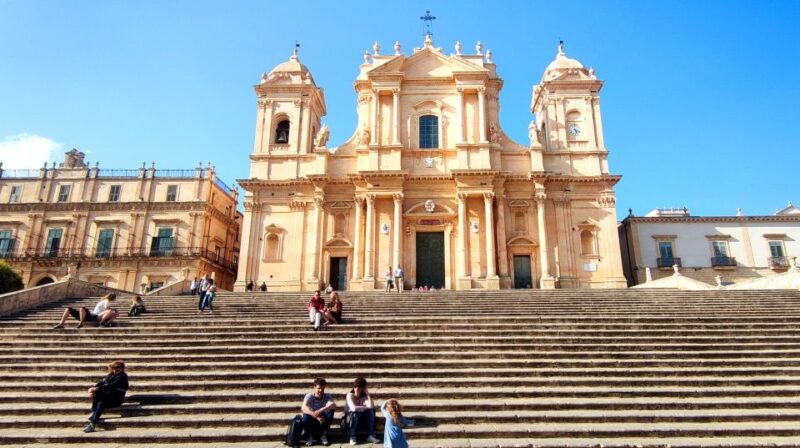
- Palazzolo Acreide, a Corinthian-Syracusan colony, offers insights into Sicily’s ancient Greek heritage and Baroque architecture.
- Noto, rebuilt after the 1693 earthquake, showcases a distinct herringbone urban layout and stunning late-Baroque monuments.
- Baroque architectural splendor can be seen in the ornate facades of churches and palaces in both Palazzolo Acreide and Noto.
- Palazzolo Acreide’s archaeological sites, such as the Greek theatre and temples, reveal the town’s rich historical significance.
- The tour package includes tickets to all major monuments, hotel pickup and drop-off, and guided tours, providing a comprehensive exploration of these late-Baroque gems.
Palazzolo Acreide: Corinthian-Syracusan Colony
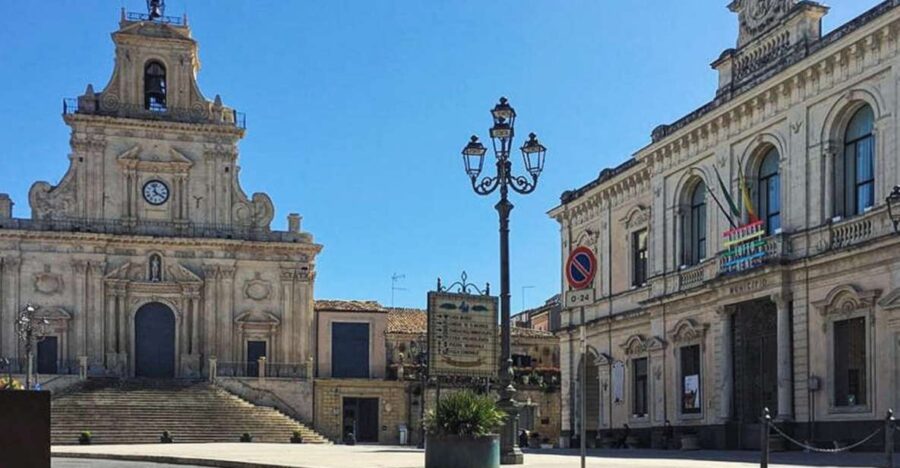
Palazzolo Acreide, formerly known as Akrai, was originally established as a Corinthian-Syracusan colony in 664/663 BC, showcasing its rich ancient heritage.
This historic town has seen its fair share of cultural influences over the centuries, from its Greek roots to the later Baroque architectural flourishes that adorn its buildings.
Today, visitors can explore the archaeological site, which includes the remains of a Greek theatre, temples, and other structures that offer a glimpse into Palazzolo Acreide‘s illustrious past.
The town’s strategic location and rich history have made it an enduring attraction for those seeking to uncover the secrets of Sicily’s storied past.
You can also read our reviews of more tours and experiences in Palazzolo Acreide.
Post-Earthquake Rebirth in Noto
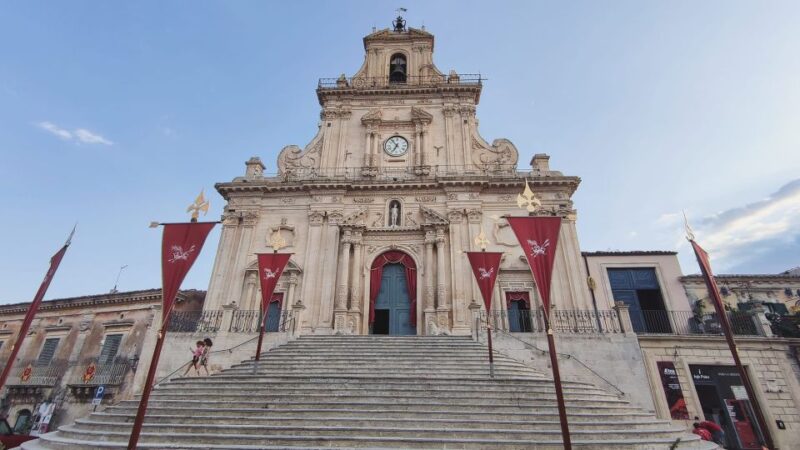
Following the catastrophic Val di Noto earthquake of 1693, Noto underwent an impressive rebirth, with the town adopting a distinct herringbone urban layout and embracing the captivating late Baroque architectural style that now adorns its monuments and buildings.
The town’s post-quake reconstruction represented a symbolic rejuvenation, as evidenced by the stunning Church of Santa Chiara, Palazzo Ducezio, and Tina Di Lorenzo theatre.
This architectural renaissance reflects the resilience and determination of Noto’s people, who used the disaster as an opportunity to reinvent their community.
The town’s late Baroque features – including ornate facades, intricate carvings, and harmonious proportions – now attract visitors from around the world seeking to experience this unique, phoenix-like transformation.
Baroque Architectural Splendor
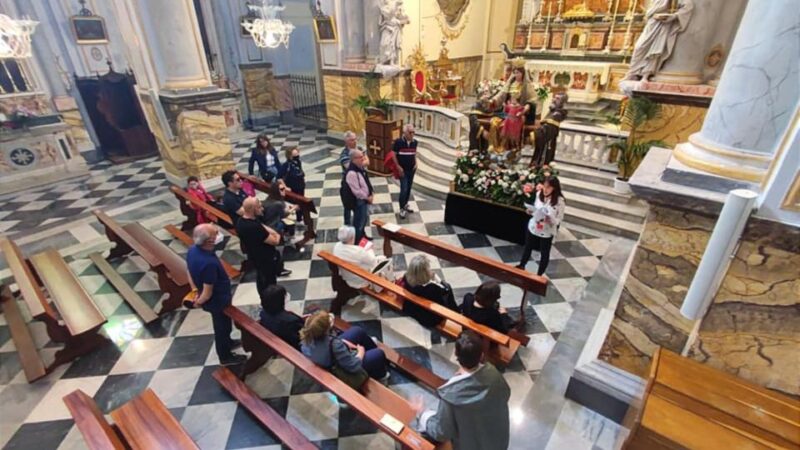
The exquisite Baroque architecture that adorns the towns of Palazzolo Acreide and Noto captivates visitors with its ornate facades, intricate carvings, and harmonious proportions.
In Palazzolo Acreide, the Greek theatre and the Church of St. Sebastian showcase the finest examples of Baroque splendor.
Meanwhile, Noto’s architectural gems, such as the Church of Santa Chiara, Palazzo Ducezio, and Tina Di Lorenzo theatre, exemplify the late Baroque style with their elaborate detailing and striking symmetry.
These towns’ rebirth following the devastating 1693 earthquake is embodied in their magnificent Baroque structures, which serve as a testament to the resilience and artistic prowess of the Sicilian people.
Exploring these architectural marvels is a truly immersive experience.
Historical Significance of Palazzolo Acreide
Along With its captivating Baroque architecture, Palazzolo Acreide boasts a rich history dating back to the 7th century BC, when it was established as a Corinthian-Syracusan colony known as Akrai.
The town’s strategic location and fertile lands made it an important center of trade and culture in ancient Sicily. Over the centuries, Palazzolo Acreide has witnessed the rise and fall of various civilizations, including the Greeks, Romans, Byzantines, and Normans.
Today, the town’s archaeological sites, such as the Greek theater and necropolis, offer a glimpse into its storied past. Palazzolo Acreide’s enduring legacy is a testament to the resilience and adaptability of this historic Sicilian gem.
-
Palazzolo Acreide’s origins date back to the 7th century BC as a Corinthian-Syracusan colony.
-
The town’s strategic location and agricultural wealth made it an important regional hub.
-
Palazzolo Acreide’s archaeological sites provide a window into its rich, multilayered history.
Exploring Noto’s Late Baroque Monuments
Noto’s late Baroque monuments showcase the architectural grandeur that emerged after the devastating 1693 Val di Noto earthquake, reflecting the town’s resilient spirit and desire for renewal.
The Church of Santa Chiara, with its ornate facade and intricate stone carvings, stands as a testament to the skilled craftsmanship of the era.
The stately Palazzo Ducezio, the town’s administrative center, boasts a magnificent entrance and elegant interiors.
Nearby, the Tina Di Lorenzo theatre captivates visitors with its opulent design and rich cultural heritage.
These magnificent structures, harmoniously blending into Noto’s herringbone urban layout, exemplify the Baroque artistry that transformed the town into a UNESCO World Heritage Site, celebrated for its enduring beauty.
Key Sites in Palazzolo Acreide
Palazzolo Acreide’s rich history and Baroque beauty unfold through its well-preserved archaeological area and Greek theatre, where visitors can enjoy the town’s ancient roots.
The archaeological site features ruins from the former Corinthian-Syracusan colony of Akrai, including remnants of temples, a gymnasium, and a Roman-era theatre.
Beyond the ancient structures, Palazzolo Acreide showcases its Baroque architectural splendor in several noteworthy sites:
-
The Church of San Sebastiano, a stunning example of late Baroque style with an ornate façade and interior.
-
Palazzo Ducezio, a grand 18th-century palazzo housing the town’s municipal offices.
-
The picturesque town center, with its harmonious blend of Baroque buildings and charming narrow streets.
Noto’s Distinctive Herringbone Urban Layout
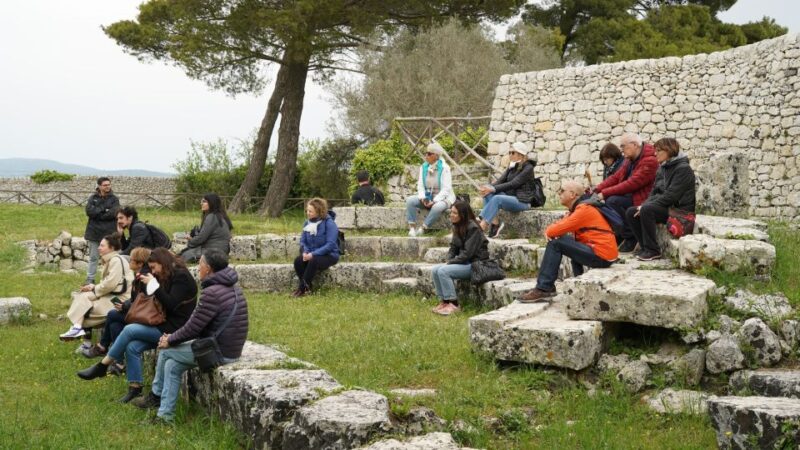
Emerging from the devastating 1693 earthquake, Noto’s distinctive herringbone urban layout reflects a meticulous design, guiding visitors through its harmonious Baroque splendor.
The town’s streets radiate outward from its main axis like the feathers of a herringbone pattern, creating a cohesive, visually stunning effect. This meticulously planned layout showcases Noto’s commitment to urban planning, ensuring an organized, pedestrian-friendly experience.
As visitors explore the streets, they’ll be captivated by the uniformity of the Baroque architecture, from the towering cathedral to the ornate palaces and public buildings.
Noto’s herringbone pattern isn’t merely aesthetic – it’s a testament to the town’s resilience and forward-thinking vision in the face of natural disaster.
Tour Inclusions and Booking Information
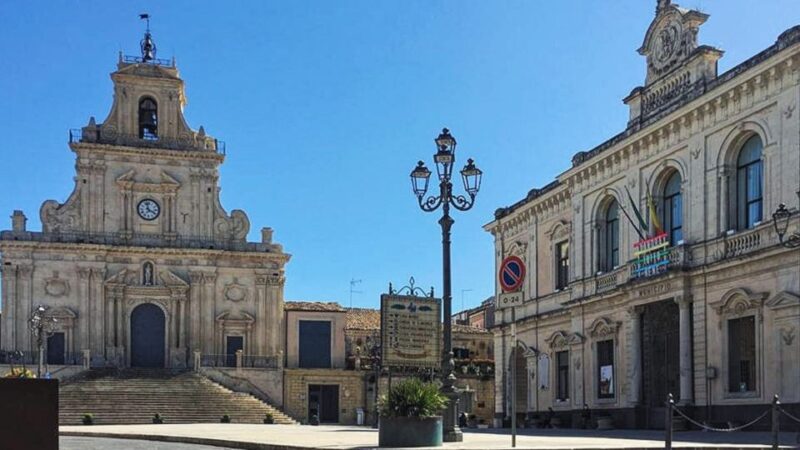
The tour includes tickets for all monuments visited, excluding any additional fees, and provides hotel pickup and drop-off service. Pricing starts from SEK 3,620 per group of up to 50 participants, allowing visitors to reserve their spot without upfront payment.
Travelers can check availability for starting times and meet the tour guide at the entrance to the archaeological area and Greek theatre of Palazzolo Acreide.
This all-inclusive package offers several advantages:
-
Seamless logistics with hotel transportation, allowing for a hassle-free experience
-
Access to UNESCO World Heritage Sites without the need to purchase individual entry tickets
-
Flexible booking options, encouraging spontaneous travelers to secure their spot
With these thoughtful inclusions, the tour provides an efficient and enjoyable way to discover the late-Baroque gems of Palazzolo Acreide and Noto.
Frequently Asked Questions
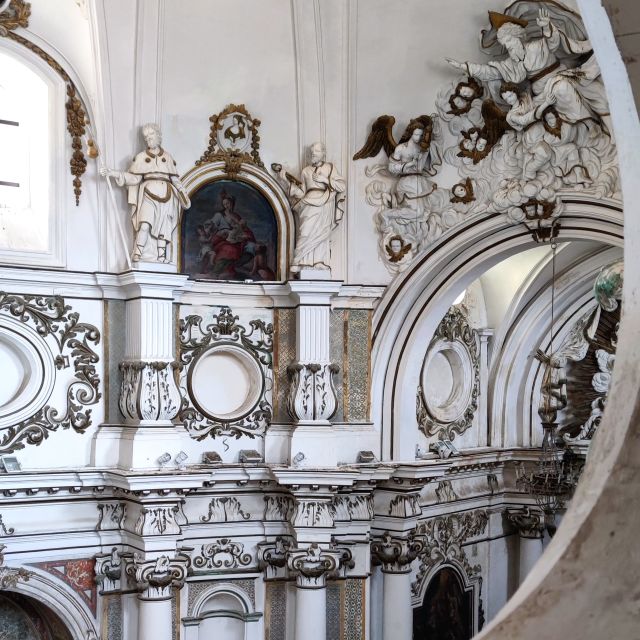
Can I Book the Tour for a Private Group?
Yes, the tour offers a private group option. Customers can book the tour for their own private group, allowing them to enjoy the experience in a more personalized setting without other participants.
Do the Tour Tickets Include Entry to All Monuments?
The tour tickets include entry to all monuments except those listed in the exclusion box. This provides access to the key sites in Palazzolo Acreide and Noto, allowing visitors to fully explore the Baroque beauty of these UNESCO World Heritage sites.
What Is the Cancellation Policy for the Tour?
The tour offers free cancellation up to 24 hours in advance for a full refund. This provides flexibility for travelers to adjust their plans without penalty if needed.
Is Transportation to and From the Meeting Point Included?
The tour includes hotel pickup and drop-off, so transportation to and from the meeting point at the entrance to the archaeological area and Greek theatre of Palazzolo Acreide is provided as part of the package.
Are Food, Drinks, and Gratuities Covered in the Tour Price?
Food, drinks, and gratuities are not included in the tour price. Participants will need to cover the cost of their own meals and beverages, as well as any tips for the guide or driver.
Recap
Palazzolo Acreide and Noto offer travelers a chance to enjoy Sicily’s rich cultural legacy.
Palazzolo’s archaeological sites reflect its Corinthian-Syracusan roots, while Noto’s Baroque architecture and distinctive urban layout showcase the resilience of this historic town.
Together, these late-Baroque gems provide an unforgettable glimpse into Sicily’s past, inviting visitors to discover the artistry and resilience that define these remarkable destinations.
You can check if your dates are available here: